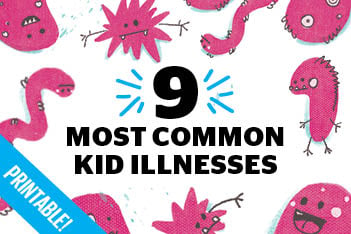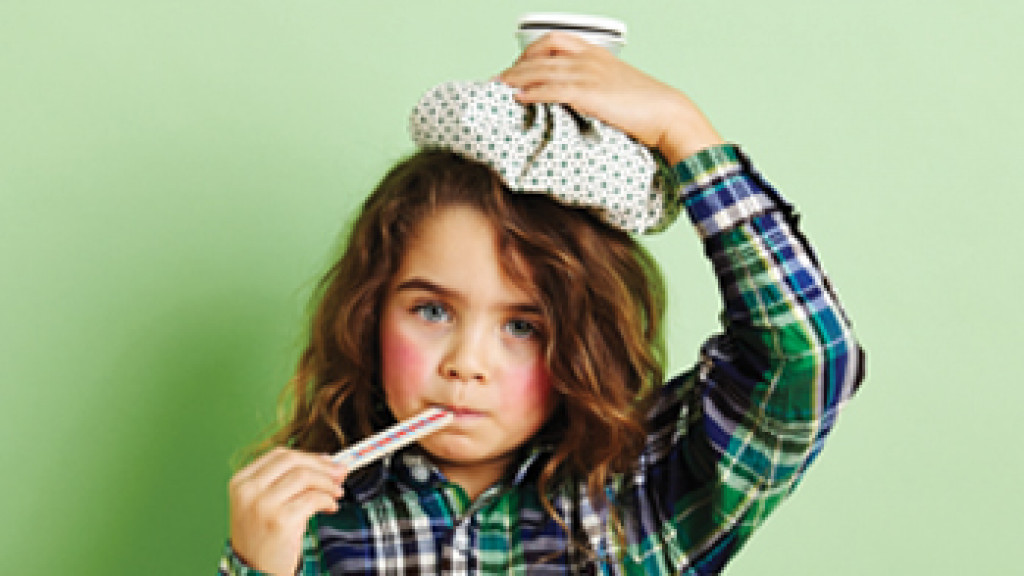iStock
If Alex had been Angela Bloomfield’s first child, she might have panicked at the raised rash that raced down her five-year-old son’s body a few months ago. “You could watch it travelling along his body, from the top of his head, all the way down,” the Montreal mom recalls. A day earlier, Alex’s cheeks turned bright crimson, and he began running a low-grade fever. When she saw the red, lacy pattern blooming on her son’s torso, Bloomfield connected the dots: Fifth disease, or “slapped cheek syndrome,” named for the look of the classic facial rash.
Both of her older kids had contracted the viral infection while in kindergarten, so Bloomfield knew that fifth disease was a benign illness—at least most of the time. Because it temporarily stops production of red blood cells, fifth disease—caused by the Parvovirus B19 infection and also known as erythema infectiosum—is potentially risky in children with certain blood diseases, people with compromised immune systems and a small minority of unborn babies whose mothers become infected while pregnant.
 Your ultimate guide to the most common kid illnessesFifth disease, which typically hits kids between the ages of four and 10, was so named because it was the fifth rashy childhood infection to be described in medical literature. The first four were measles, scarlet fever, rubella (or German measles) and something called rubeola scarlatinosa, which no longer officially exists. Roseola is sometimes known as sixth disease.
Your ultimate guide to the most common kid illnessesFifth disease, which typically hits kids between the ages of four and 10, was so named because it was the fifth rashy childhood infection to be described in medical literature. The first four were measles, scarlet fever, rubella (or German measles) and something called rubeola scarlatinosa, which no longer officially exists. Roseola is sometimes known as sixth disease.
Fifth disease symptoms
Transmitted via coughs and sneezes like colds and flu, fifth disease shares some symptoms with other respiratory viruses: fever, sore throat, upset stomach, achy joints and headaches. There’s no need for treatment unless your child is uncomfortable, in which case you can use either acetaminophen or ibuprofen to ease aches and fever. In fact, before the distinctive rash erupts, there’s no way to tell fifth disease from any other virus, says Susanna Martin, a paediatrician in Saskatoon. (About 25 percent of people who get infected with Parvovirus B19 are only carriers and show no symptoms at all.)
Fifth disease rash and contagious period
Once the rosy-cheeked rash appears, the illness is typically no longer contagious, so there’s no need to exclude children from daycare or school, says Martin. Kids can show symptoms anywhere from four to 14 days after being exposed, and the body rash (which typically doesn’t itch) lingers between one to three weeks, sometimes clearing up only to reappear after a hot bath or physical activity. Despite his dramatic rash, Alex breezed through his illness. “He was fine. As long as he had ibuprofen or acetaminophen, he was comfortable,” Bloomfield says. “Compared to the flu, it was nothing.”
Fifth disease treatment
There is no vaccine to prevent the infection, nor is there any treatment for the average case. (Severe anemia—a complication that can arise in kids with blood disorders—is managed with blood transfusions.) The good news is that it’s a one-time thing—once you’ve been infected, you develop immunity and are very unlikely to catch it again.
Read more:
How serious is the flu in kids, really?
Daycare germs: What you need to know


